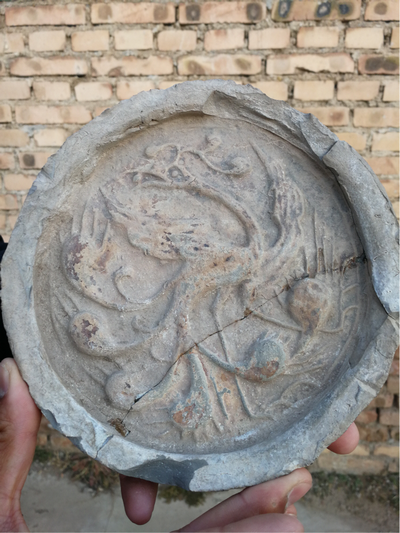Source:
https://www.chinadaily.com.cn/a/202011/12/WS5facab52a31024ad0ba93acc_1.html
By Yuan Hui in Hohhot
An aerial photo shows the large granary of the Western Han Dynasty (206 BC-AD 24) in Hohhot, Inner Mongolia autonomous region. [Photo by He Yan and Liu Yang/For chinadaily.com.cn]
A granary site of the Western Han Dynasty (206 BC-AD 24) was recently unveiled in Hohhot, Inner Mongolia autonomous region, thanks to joint efforts by the region's Institute of Cultural Relics and Archaeology and Sun Yat-sen University.
The site was located in a 110,000-square-meter ruin of a border town of the Western Han Dynasty, and extends in an east-west strip, 170 meters long and 21 meters wide.
A total of 16 grooves were excavated inside the site. Archaeologists estimate the function of the grooves was to ensure sufficient ventilation and humidity resistance. Along with the grooves, pinewood was used to erect walls, which also helped to prevent insect infestations and moisture accumulation.
Millet was found in the clays after the flotation process, as well as in storage pits beneath the rammed earth.

A tile-end with a phoenix bird decorative pattern unearthed in the granary of the Western Han Dynasty (206 BC-AD 24) in Hohhot, Inner Mongolia autonomous region. [Photo by He Yan and Liu Yang/For chinadaily.com.cn]
The site is believed to be a barn, based on its grooved structure and the relics excavated, and thought to have been put into use for 100 years before being destroyed in a conflagration. Historical records related to the barn have not been found yet.
Jin Zhiwei, a member of the archaeological team, said the site was the first suspected barn excavated in a border town of the Western Han Dynasty, providing sources for research into granary architecture as well as the layout of a border town at that time.
"This site is of great significance for the study of China's ancient architectural technology, military deployment by the central government to areas along the Great Wall in the northern region and the agricultural economy in north China during the Han Dynasty," Jin said.
Zhou Jiaxin contributed to the story.
Archaeologists work at the large granary of the Western Han Dynasty (206 BC-AD 24) in Hohhot, Inner Mongolia autonomous region. [Photo by He Yan and Liu Yang/For chinadaily.com.cn]



